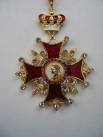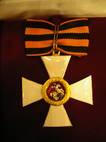Task XI. Weights and measures. Match the European equivalents with the definitions of metric system common for GB.
1 centimeter 0.394 inch
1 hectare 2.471 acres
1 meter 39.4 inches
1 kilometer 0.6214 mile or about a mile
1 are 0.025 acre
1 square kilometer 0.386 square mile
1 centigram 0.154 grain
1 gram 14.43 grains
1 kilogram 2.205 pounds
1 tonne 19.688 hundredweight
1 litre 1.76 pints
1 decalitre 2.2 gallons
Task XII. Name the following realia:
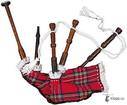
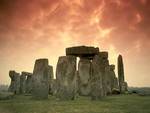


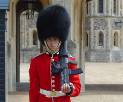
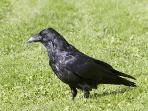
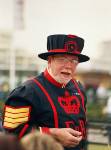
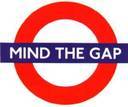
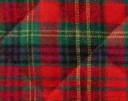
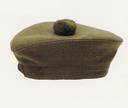
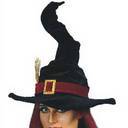
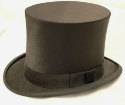

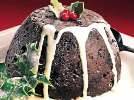
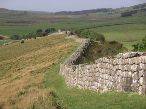



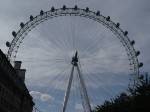
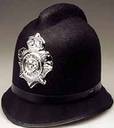

1. Bagpipes
2. Stonehenge
3. Red Double Decker bus
4. Telephone box
5. Foot Guards
6. The ravens at the Tower of London: the guardians of the Tower
7. Yeomen Warders
8. A sign that warns you should be careful of a gap/crevice/hole between the train and platform.
9. Tartan
10. Tam o'shanter
11. Witch s hat
12. Zylinder
13. Bowler hat
14. Pudding
15. Hadrians Wall
16. The Great Lakes District
17. Royal Exchange
18. Pillar Box (Post Box)
19. London Eye
20. Royal Marines
21. Clan Crest Dress Sporran
Task XIII. Read the following text, find out and underline the non-equivalent realia.
Aristocratic Titles
Ordinary people in Britain are themselves often confused by the many titles and complicated hierarchy of the British aristocracy, but there' are guiding rules for classifying the peerage by rank and title and the titles of members of the aristocracy are listed in Debrett's guides and Burke's Peerage.
There are five main grades of nobility, collectively known as peers or the peerage. In order, they are: dukes, marquesses, earls, viscounts and barons. All these are entitled to sit in the House of Lords, and all are called 'Lord'. There are also additional grades. The highest, ranking above dukes, are the royal dukes, that is, those dukes who are members of the royal family, at present five in number: the Duke of Edinburgh (Prince Philip), the Duke of Cornwall (Prince Charles), the Duke of York (Prince Andrew), the Duke of Gloucester and the Duke of Kent Ranking between royal dukes and the dukes come the two archbishops, of Canterbury and York. Bishops, not all of whom have seats in the House of Lords, rank between viscounts and barons.
Some peers are life peers, that is they have not inherited their titles as hereditary peers ■ do, but have been granted them by the monarch in either the New Year Honours List or the Birthday Honours List. Since 1958, all male life peers have been barons. Women who are made life peers are given the title countess or baroness.
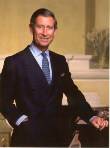




Find out the information about these people, their social status, titles, activities.
Task XIV. Translate the following text into English using your special knowledge from the previous text. Be especially attentive with non-equivalent lexis concerning British titles. Pay a particular attention to the translation of underlined and bold words.
Титулы и звания в Англии
Высшее английское дворянство, сословие пэров, имеет пять степеней: герцог, маркиз, граф, виконт и барон. Низший, баронский титул, как правило, присваивается новым, пожизненным членам палаты лордов, получающим дворянство за заслуги перед государством. В любом случае, этот титул в обращении и церемониале опускается, вместо него используется титул лорда, который может предшествовать только наименованию титула.
Наименование титула не является фамилией, но может с ней совпадать (лорд Байрон). Вместо полного титула Baron Olivier of Brighton правильно будет сказать лорд Оливье. Имя в этих случаях всегда предшествует титулу: Альфред, лорд Теннисон, или Джордж Гордон, лорд Байрон. Титулы маркиза, графа и виконта также опускаются в неофициальном контексте и заменяются на лорд. Эти титулы, однако, обязательно звучат полностью в церемониале. Наименование титула, если оно не совпадает с фамилией, является территориальным, например Anthony Eden, Earl of Avon, и тогда правильно будет сказать лорд Эйвон.
Существуют, однако, так называемые титулы учтивости, не имеющие под собой юридической основы, среди которых тоже есть титул лорда. В этой традиционной системе старший сын герцога носит титул маркиз; старший сын маркиза - титул граф; старший сын графа - титул виконт. Младшие сыновья герцогов и маркизов носят титул лордов, но в этом случае титул предшествует имени: лорд Питер Уимси. Все дочери герцогов, маркизов и графов носят титул леди, который предшествует имени: леди Джейн или леди Джейн Сеймур. Сыновья и дочери виконтов и баронов, а также младшие сыновья графов носят титул "достопочтенный". Существует также титул Right Honourable, который служит своего рода бесплатной добавкой к титулам графа, виконта и барона, а также стоит перед титулом лорда у младших сыновей герцогов и маркизов. Титулу маркиза предшествует в церемониале титул Most Honourable Update.
Происхождение титулов сильно варьируется. Бароны появились сразу после нормандского завоевания, но первоначально это слово означало рыцаря-вассала, прежде всего королевского. К XIII веку уже сложилось разделение на greater и lesser barons; первые и стали обладателями соответствующего титула. Первым английским виконтом стал Джон, лорд Бомонт в 1440 году.
Титул эрла (графа) - англо-саксонский, и первоначально означал управляющего некой крупной территории. Вильгельм Завоеватель пытался заменить его на титул count, но безуспешно. Титул рыцаря, дающий его обладателю право на вежливое обращение sir, является личным и не передается по наследству. Это низший дворянский титул: рыцари не входят в сословие пэров (peerage). Мало кто знает, что у этого звания есть различные степени.
Титул баронета первоначально также являлся степенью рыцарства (knight baronet), но не прижился в этом качестве.
Понятие эсквайр подразумевает в узком смысле нетитулованного дворянина, а в широком фактически эквивалентно титулу вежливости мистер. Тем не менее, эсквайр ни в коем случае не может быть обращением, и всегда следует только за фамилией, как правило в документах и письмах: Sherlock Holmes, Esq.
The highest English nobility, the estate of peers, has five degrees: the Duke, the Marquis, the Count, the Viscount and the Baron. The lowest, baronial title, as a rule, is appropriated to new, lifelong members of the House of Lords, who receive the nobility for their services to the state. In any case, this title in circulation and ceremonial is omitted, instead the title of lord is used, which can precede only the name of the title.
The name of the title is not a surname, but it can coincide with it (Lord Byron). Instead of the full title of Baron Olivier of Brighton, it's right to say Lord Olivier. The name in these cases always precedes the title: Alfred, Lord Tennyson, or George Gordon, Lord Byron. The titles of the Marquis, Count and Viscount also descend in an informal context and are replaced by the Lord. These titles, however, necessarily sound completely in ceremonial. The title of the title, if it does not coincide with the surname, is territorial, for example Anthony Eden, Earl of Avon, and then it will be right to say Lord Avon.
There are, however, so-called courtesy titles that do not have a legal basis, among which there is also a title of lord. In this traditional system, the eldest son of the duke wears the title of Marquis; the eldest son of the Marquis - the title of Count; the eldest son of the count is the Viscount title. The younger sons of the dukes and marquises bear the title of lords, but in this case the title precedes the name: Lord Peter Wimsey. All the daughters of the Dukes, Marquises and Counts bear the title of Lady, who precedes the name: Lady Jane or Lady Jane Seymour. The sons and daughters of the viscounts and barons, as well as the youngest sons of the counts, bear the title "venerable". There is also the title of Right Honourable, which serves as a kind of free addition to the titles of Count, Viscount and Baron, and also stands before the title of Lord of the younger sons of the Dukes and Marquises. The title of the Marquis is preceded in the ceremony by the title of Most Honourable Update.
The origin of titles varies greatly. Barons appeared immediately after the Norman conquest, but originally this word meant a knight-vassal, primarily a royal one. By the 13th century, there had already been a division into greater and lesser barons; the first and became holders of the corresponding title. The first English viscount was John, Lord Beaumont in 1440.
The title Earl - Anglo-Saxon, and originally meant the manager of some large territory. William the Conqueror tried to replace him with the count, but without success. The title of the knight, giving his owner the right to a polite treatment sir, is personal and not inherited. This is the lowest noble title: knights do not belong to the peerage class. Few people know that this title has different degrees.
The baronet title was also originally a knight baronet, but did not get accustomed to it.
The concept Esquire means in the narrow sense of a non-titled nobleman, and in broad terms it is actually equivalent to the title of politeness, Mr.. Nevertheless, Esquire can not be treated in any way, and always follows only the surname, usually in documents and letters: Sherlock Holmes, Esq.
Task XV. Here is the list of the most notorious orders of the British Empire. Match the English names with their Russian equivalents (mind the pronunciation):
The Most Ancient and Most Noble Order of the Thistle, 1687 Орден Чертополоха
The Most Illustrious Order of St Patrick, 1788 Орден Св. Патрика
The Most Honourable Order of the Bath, 1399 Орден Бани
The Most Exalted Order of the Star of India, 1861 Орден «Звезда Индии»
The Most Distinguished Order of St Michael and St George, 1818 Орден Св. Михаила и Св. Георгия
The Most Eminent Order of the Indian Empire, 1877 Орден Индийской Империи
The Royal Victorian Order, 1896 Орден королевы Виктории
The Most Excellent Order of the British Empire, 1917 Орден Британской империи



